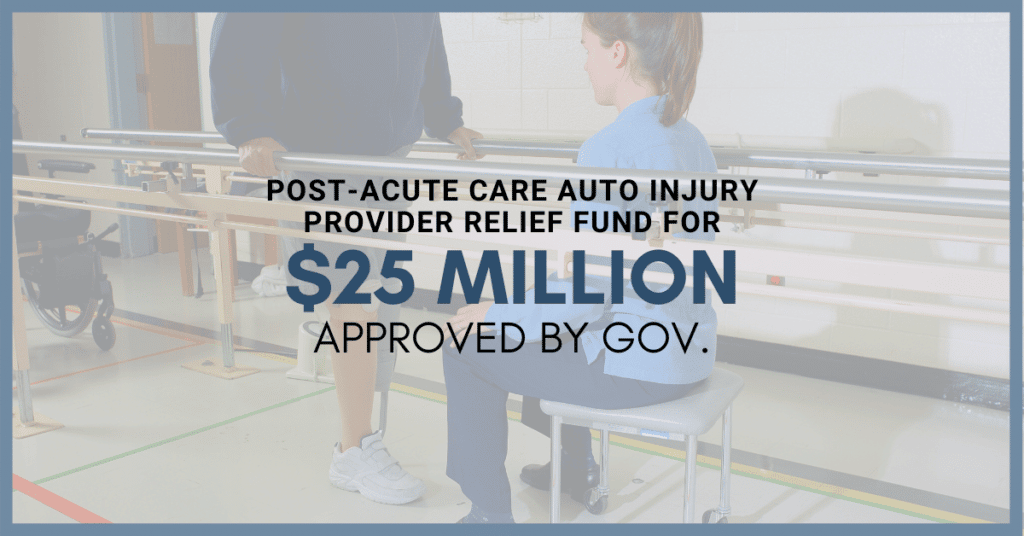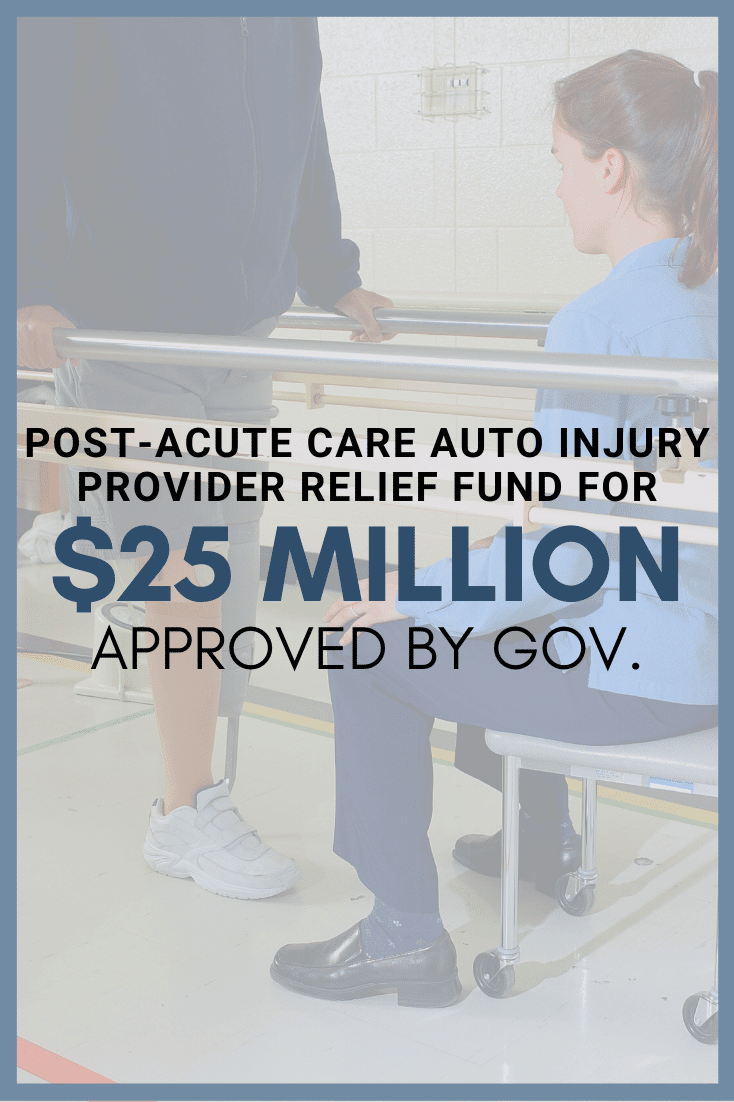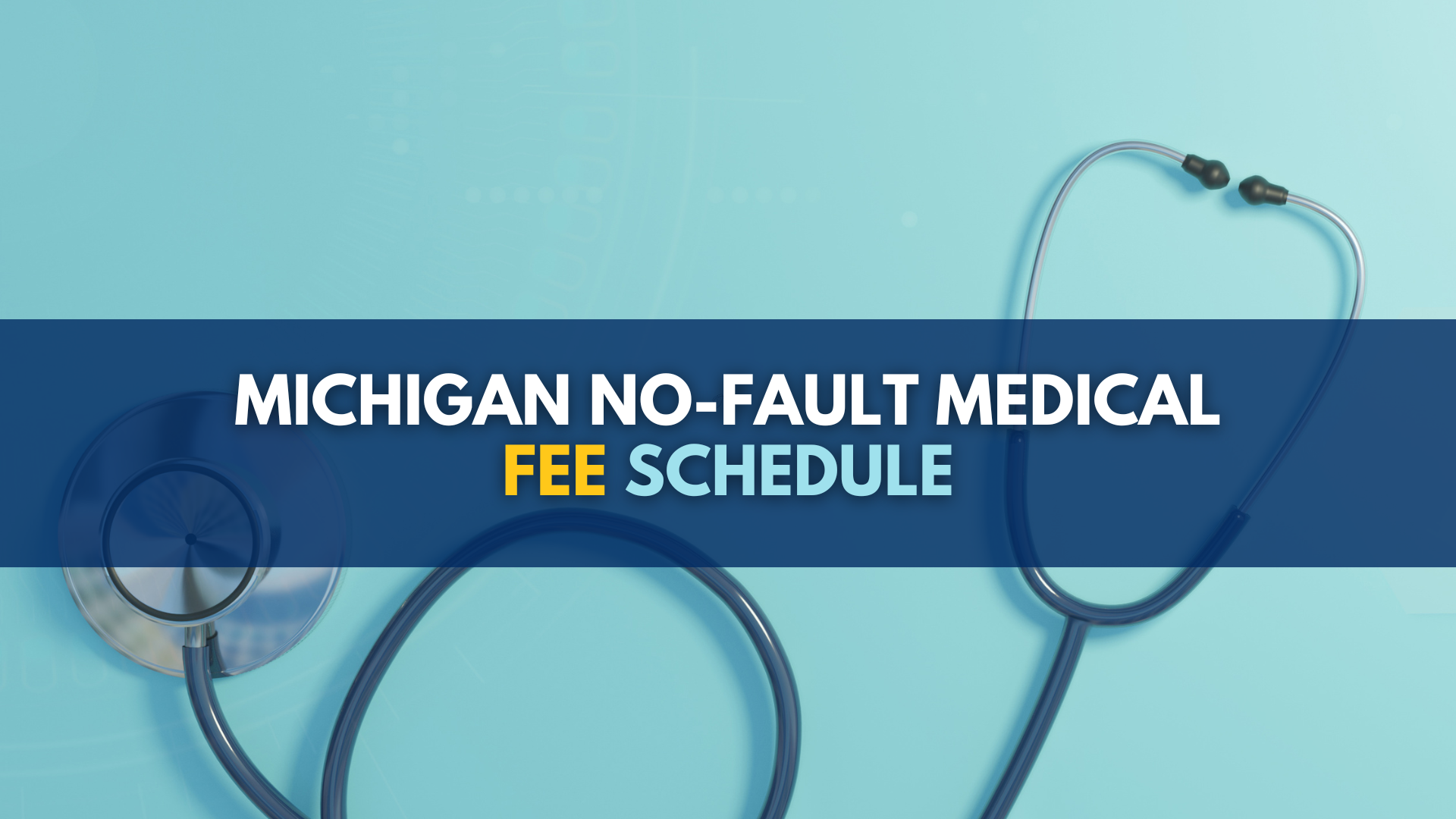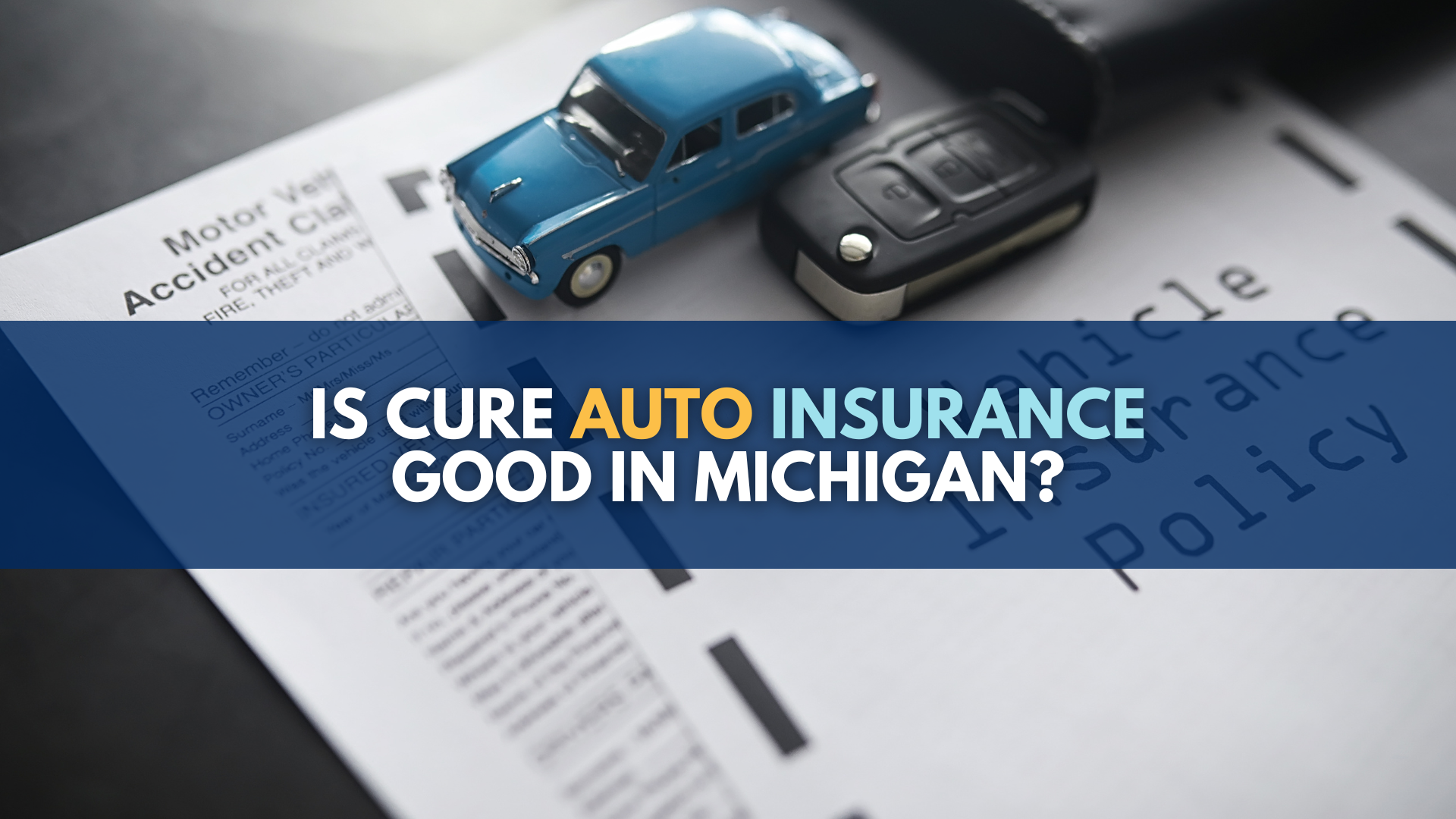
On July 15, 2021, Gov. Whitmer approved a $25 million Post-Acute Care Auto Injury Provider Relief Fund as a result of the new auto No-Fault law’s medical fee schedule.
The fund was created by Senate Bill 28. It was the result of a House substitution bill introduced and approved by the Michigan House of Representatives on June 24, 2021. It is Public Act 65 of 2021.
The Post-Acute Care Auto Injury Provider Relief Fund will now create a small window of help for those who provide medical treatment for catastrophically injured car crash victims so that they may continue for the time being to continue providing care without shutting their doors.
But make no mistake, this emergency fund is NOT the fix that was and is needed.
The fact that lawmakers had to rush the Post-Acute Care Auto Injury Provider Relief Fund to be signed by Gov. Whitmer yesterday is itself a travesty. It is the result of a medical fee schedule (subsection (7) of MCL 500.3157) in the new auto No-Fault law that lawmakers literally rammed through the Legislature in one afternoon. It is the result of rushed and sloppily drafted language that the vast majority of lawmakers that fateful afternoon never had time to even read.
The better fix would be to repeal subsection (7) of the medical fee schedule completely. Alternatively, lawmakers could act on Senate Bill 314 or House Bill 4486 or 4492. Or they could just pass House Bill 5125 which would give lawmakers another year to meaningfully consider whether the medical fee schedule is needed – and whether the fee schedule contained in subsection (7) of the new auto No-Fault law is truly the best means to lower prices and still provide essential medical care for accident victims.
What lawmakers should NOT be doing is now creating a huge new bailout of medical care services for catastrophically injured car crash victims on the backs of Michigan taxpayers. Insurance companies get to slash payouts under the new fee schedule law and boost already high profit margins, but the burden of protecting the medical care industry now gets shifted to taxpayers. With this new Post-Acute Care Auto Injury Provider Relief Fund, the auto insurers still get to reap their profits and the rest of us as taxpayers get to foot the bill for the mistake of politicians in Lansing who passed a poorly drafted bill that was written largely by the insurance industry’s lobbyists.
Just the way the auto insurance industry likes it.
What is the Post-Acute Care Auto Injury Provider Relief Fund?
The Post-Acute Care Auto Injury Provider Relief Fund states that the people, clinics and healthcare services that are used to treat catastrophically injured car crash victims can get a “distribution” from the fund if the new No-Fault law’s medical fee schedule has caused them to bill at rates that are below the cost of providing the service. (Section 301(5))
The stated purpose of the Post-Acute Care Auto Injury Provider Relief Fund is to “to support distributions to” healthcare services and caregivers “facing systematic losses with respect to services offered to persons injured in motor vehicle accidents.” (Section 301(12))
What is post-acute care?
Post-acute care is the medical care that car crash victims need after being hospitalized. It includes: (1) brain injury rehabilitation; (2) spinal injury rehabilitation; (3) 24/7 attendant care; (4) specialized facilities; (5) speech and cognitive therapy; (6) skilled nursing; and (7) home health care.
Which providers are eligible under the Post-Acute Care Auto Injury Provider Relief Fund?
The post-acute care providers who are eligible for distributions under the Post-Acute Auto Injury Provider Relief Fund must meet the law’s definition of a “provider,” which is “a post-acute brain or spinal injury clinic or other person that renders treatment or training, or a post-acute brain or spinal injury attendant care provider.” (Section 301(13)(d))
What are the Post-Acute Care Auto Injury Provider Relief Fund’s requirements for healthcare services?
In order to recover a distribution from the Post-Acute Care Auto Injury Provider Relief Fund, caregivers and healthcare services must show they have experienced “a systematic deficit with respect to services offered to persons injured in motor vehicle accidents.” “[L]ost profits alone” is not enough. (Section 301(7)(h))
In particular, caregivers and healthcare services for catastrophically injury car crash victims must provide “[d]ocumentation, including full financial statements, indicating a systematic deficit caused by changes to charges, as required by [the new No-Fault law’s medical fee schedule in] MCL 500.3157, and payments received in response to those charges. (Section 301(5)(f))
The following information will also be required under (Section 301(5)(a-e)):
- “The total number of patients treated by the provider and the entities billed for each patient.”
- “A full list of charges and payments received in response to those charges and supporting invoices for all charges that were charged to and paid by auto insurers for motor-vehicle accident-related care in 2019.”
- “A full list of charges and payments received in response to those charges and supporting invoices for all charges that were charged to and paid by other forms of insurance or other entities for non-motor-vehicle-accident related care in 2019.”
- “Evidence to demonstrate that the provider attempted to bill for a service that does not have a Medicare code, has not been paid at the charged rate or otherwise reimbursed, and that adjustment has been upheld by the department during the utilization review process under the utilization review rules, R 500.61 to R 500.69 of the Michigan Administrative Code, promulgated by the department under section 3157a of the insurance code of 1956, 1956 PA 218, MCL 500.3157a.”
- “Documentation indicating a good-faith effort to alter business practices to adhere to section 3157 of the insurance code of 1956, 1956 PA 218, MCL 500.3157.”
As if that were not enough, the law also empowers DIFS to create “further requirements to achieve compliance with” the “good-faith effort” and “systemic deficit” requirements. (Section 301(5)(e) and (f))
Where is all of this scrutiny for auto insurance premiums?
The question that has never been answered is this: why are the auto insurance companies and their profit margins and premium rates NOT subjected to the same level of scrutiny that healthcare services’ and caregivers’ charges are under the Post-Acute Care Auto Injury Provider Relief Fund?
For that matter, why was it never done before this new law took effect? As I have said repeatedly, perhaps the only “No-Fault reform” Michigan ever needed was for our insurance commissioner to do what insurance commissioners all over America can do: regulate excessive profit margins from the insurance industry? In Michigan, auto insurers enjoy a cartel-like business environment where we as drivers are obligated to purchase their product under penalty of law, but they can sell this product without any scrutiny of the profits they make from selling a product that we are obligated to purchase.
Can you imagine how affordable car insurance would be if we forced auto insurers to PROVE a “systemic deficit” or “systemic losses” in order to raise premium rates?
These same lawmakers who are so quick to demand such intrusive transparency and accountability measures be imposed on the people who provide 24/7 attendant care to car crash victims and who help them try to literally survive and reacquire the most basic functions of daily living give the insurance industry a free pass and a blank check.
Where was this level of scrutiny when lawmakers and the Governor were passing the new auto No-Fault law back in 2019, so that this entire mess could have been avoided instead of heaped on the backs of taxpayers to now pay for their mistake?
Process for providers under the Post-Acute Care Auto Injury Provider Relief Fund
The Department of Insurance and Financial Services – or DIFS – will develop “application and review processes” for the fund. Applications under the fund will be accepted starting 30 days after the $25 million appropriation’s effective date. Applications under the fund will be decided on within 21 days and distributions made within 7 days of approval. (Section 301(7)(a), (c), (d))
Who is funding the Post-Acute Care Auto Injury Provider Relief Fund?
Taxpayers are funding the $25 million Post-Acute Care Auto Injury Provider Relief Fund. The money appropriated for the fund is appropriated from the “State general fund/general purpose.” (Section 101)
Why does this fund sound so familiar?
This fund is a variation on the Michigan Catastrophic Claims Association (MCCA) fund that the insurance industry forced lawmakers to pass in the late 1970s. It is another way for auto insurers to avoid paying for the medical coverage they promised by shifting the responsibility to someone else.
When No-Fault was passed in 1973, it required all drivers to purchase and all auto insurance companies to provide unlimited medical coverage. Even though they enjoyed collecting premiums from Michigan’s millions of drivers, the auto insurers resented having to pay out for the coverage they contracted for. So they convinced the Legislature to create the MCCA in 1978 which allows insurers to off-load their liability for crash-related medical expenses for catastrophically injured victims to the MCCA. The auto insurance industry also convinced lawmakers to make Michigan drivers – and not the insurers who had already collected premiums based on risk analysis and actuarial assumptions of claims payouts – pay for the MCCA by imposing an additional annual MCCA assessment on top of what drivers were already paying for auto insurance.
This new Post-Acute Care Auto Injury Provider Relief Fund is basically the same thing. In this case, the new fund for has the same burden-shifting dynamic that the MCCA has.
However, one significant difference between this fund and the MCCA is that the funds being used for the MCCA come from only the Michigan residents who own and drive cars. This new bailout fund that was created and signed into law yesterday as the Post-Acute Care Auto Injury Provider Relief Fund comes from all Michigan taxpayers, whether they own a car or not.
That’s a very unfair way to cover-up for a bad mistake.
But at least the lawmakers in Lansing who made this mistake to begin with made sure the insurance companies still get a free pass.
Injured in an automobile accident? Call the auto accident attorneys at Michigan Auto Law
If you were injured in an automobile accident and have questions about your legal rights to pain and suffering compensation, economic damages and No-Fault benefits, you can speak to an experienced auto accident lawyer at (800) 968-1001 for a free consultation. You can also get help from an experienced No-Fault insurance attorney by visiting our contact page or you can use the chat feature on our website.



